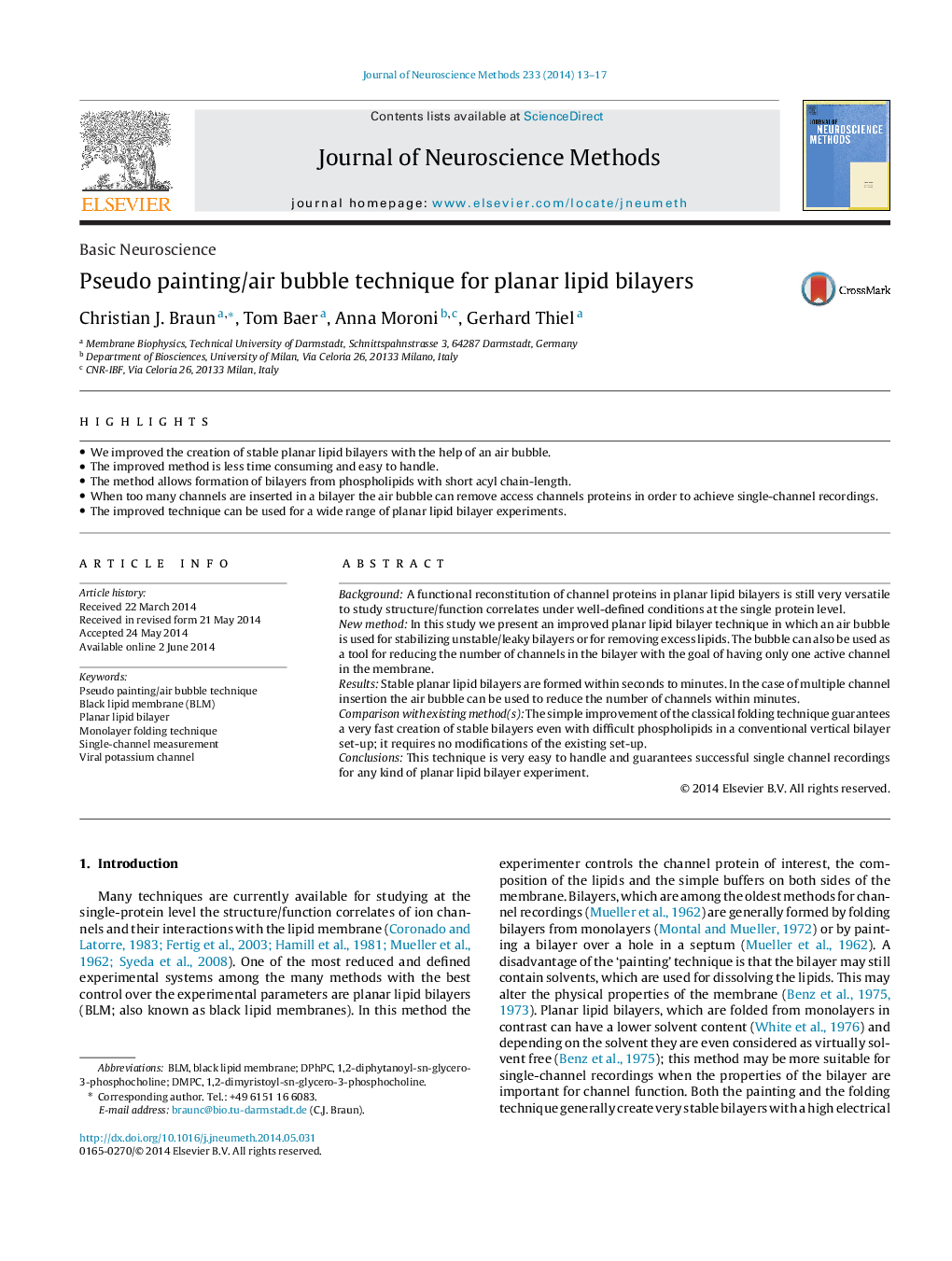| Article ID | Journal | Published Year | Pages | File Type |
|---|---|---|---|---|
| 6268470 | Journal of Neuroscience Methods | 2014 | 5 Pages |
â¢We improved the creation of stable planar lipid bilayers with the help of an air bubble.â¢The improved method is less time consuming and easy to handle.â¢The method allows formation of bilayers from phospholipids with short acyl chain-length.â¢When too many channels are inserted in a bilayer the air bubble can remove access channels proteins in order to achieve single-channel recordings.â¢The improved technique can be used for a wide range of planar lipid bilayer experiments.
BackgroundA functional reconstitution of channel proteins in planar lipid bilayers is still very versatile to study structure/function correlates under well-defined conditions at the single protein level.New methodIn this study we present an improved planar lipid bilayer technique in which an air bubble is used for stabilizing unstable/leaky bilayers or for removing excess lipids. The bubble can also be used as a tool for reducing the number of channels in the bilayer with the goal of having only one active channel in the membrane.ResultsStable planar lipid bilayers are formed within seconds to minutes. In the case of multiple channel insertion the air bubble can be used to reduce the number of channels within minutes.Comparison with existing method(s)The simple improvement of the classical folding technique guarantees a very fast creation of stable bilayers even with difficult phospholipids in a conventional vertical bilayer set-up; it requires no modifications of the existing set-up.ConclusionsThis technique is very easy to handle and guarantees successful single channel recordings for any kind of planar lipid bilayer experiment.
